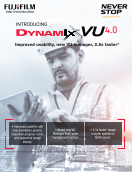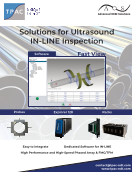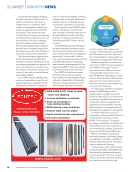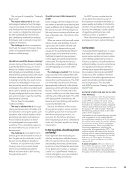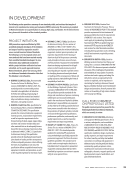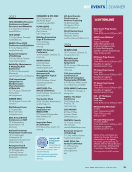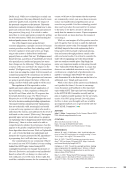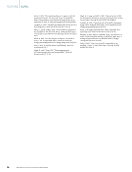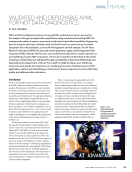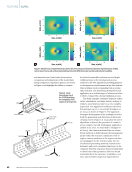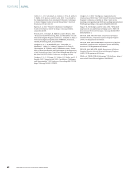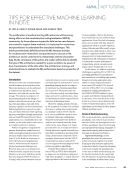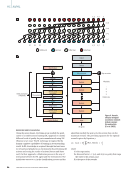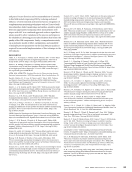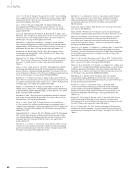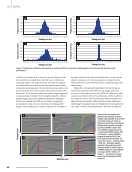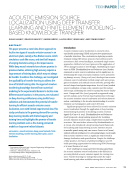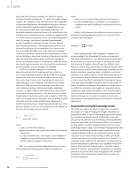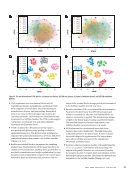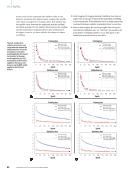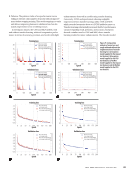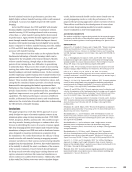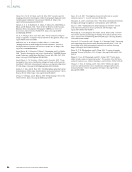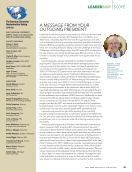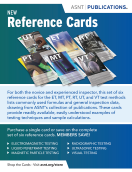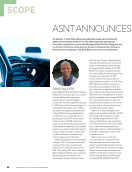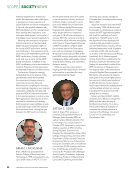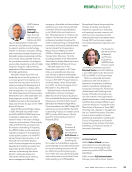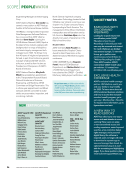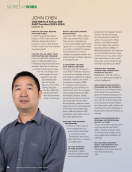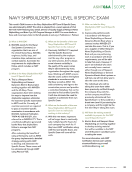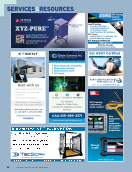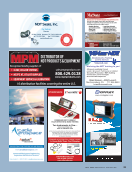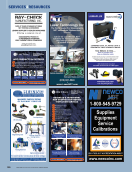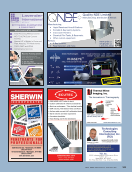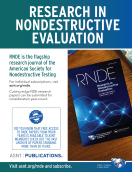Li, K., T. Li, M. Ma, D. Wang, W. Deng, and H. Lu. 2021. “Laser cladding state recognition and crack defect diagnosis by acoustic emission signal and neural network.” Optics &Laser Technology 142:107161. https://doi. org/10.1016/j.optlastec.2021.107161. Liu, J., Y. Hu, B. Wu, and Y. Wang. 2018. “An improved fault diag- nosis approach for FDM process with acoustic emission.” Journal of Manufacturing Processes 35 (August): 570–79. https://doi.org/10.1016/j. jmapro.2018.08.038. Lott, P., H. Schleifenbaum, W. Meiners, K. Wissenbach, C. Hinke, and J. Bültmann. 2011. “Design of an optical system for the in situ process moni- toring of Selective Laser Melting (SLM).” Physics Procedia 12 (PART 1): 683–90. https://doi.org/10.1016/j.phpro.2011.03.085. Masinelli, G., S. Shevchik, V. Pandiyan, T. Quang-Le, and K. Wasmer. 2021. “Artificial intelligence for monitoring and control of metal additive manufacturing.” Industrializing Additive Manufacturing. Proceedings of AMPA2020: 205–220. https://doi.org/10.1007/978-3-030-54334-1_15. Mathieu, M., M. Henaff, and Y. LeCun. 2014. “Fast training of convo- lutional networks through FFTs.” arXiv:1312.5851 [cs.CV]. https://doi. org/10.48550/arXiv.1312.5851. Morales, R. E., K. J. Harke, J. W. Tringe, D. M. Stobbe, and T. W. Murray. 2022. “Real-time laser ultrasonic monitoring of laser-induced thermal processes.” Scientific Reports 12. https://doi.org/10.1038/s41598-022- 13940-5. Nam, J., N. Jo, J. S. Kim, and S. W. Lee. 2020. “Development of a health monitoring and diagnosis framework for fused deposition modeling process based on a machine learning algorithm.” Proceedings of the Insti- tution of Mechanical Engineers. Part B, Journal of Engineering Manufacture 234 (1–2): 324–32. https://doi.org/10.1177/0954405419855224. Ramalho, A., T. G. Santos, B. Bevans, Z. Smoqi, P. Rao, and J. P. Oliveira. 2022. “Effect of contaminations on the acoustic emissions during wire and arc additive manufacturing of 316L stainless steel.” Additive Manufacturing 51:102585. https://doi.org/10.1016/j.addma.2021.102585. Raplee, J., A. Plotkowski, M. M. Kirka, R. Dinwiddie, A. Okello, R. R. Dehoff, and S. S. Babu. 2017. “Thermographic Microstructure Monitoring in Electron Beam Additive Manufacturing.” Scientific Reports 7 (1): 43554. https://doi.org/10.1038/srep43554. Rosenblatt, F. 1958. “The perceptron: A probabilistic model for informa- tion storage and organization in the brain.” Psychological Review 65 (6): 386–408. https://doi.org/10.1037/h0042519. Scime, L., and J. Beuth. 2018. “Anomaly detection and classification in a laser powder bed additive manufacturing process using a trained computer vision algorithm.” Additive Manufacturing 19:114–26. https://doi. org/https://doi.org/10.1016/j.addma.2017.11.009 https://doi.org/10.1016/j. addma.2017.11.009. Scipioni Bertoli, U., G. Guss, S. Wu, M. J. Matthews, and J. M. Schoenung. 2017. “In-situ characterization of laser-powder interaction and cooling rates through high-speed imaging of powder bed fusion additive manu- facturing.” Materials &Design 135:385–96. https://doi.org/10.1016/j. matdes.2017.09.044. Shevchik, S. A., C. Kenel, C. Leinenbach, and K. Wasmer. 2018. “Acoustic emission for in situ quality monitoring in additive manufacturing using spectral convolutional neural networks.” Additive Manufacturing 21:598– 604. https://doi.org/10.1016/j.addma.2017.11.012. Shevchik, S. A., G. Masinelli, C. Kenel, C. Leinenbach, and K. Wasmer. 2019. “Deep learning for in situ and real-time quality monitoring in additive manufacturing using acoustic emission.” IEEE Transactions on Industrial Informatics 15 (9): 5194–203. https://doi.org/10.1109/ TII.2019.2910524. Sutton, R. S., and A. G. Barto. 2018. Reinforcement Learning: An Introduc- tion. 2nd ed., The MIT Press. Taheri, H. 2018. “Nondestructive evaluation and in-situ monitoring for metal additive manufacturing.” Dissertation. Iowa State University. 61–75. Taheri, H., F. Delfanian, and J. Du. 2013. “Acoustic emission and ultra- sound phased array technique for composite material evaluation.” Proceedings of the ASME 2013 International Mechanical Engineering Congress and Exposition. Volume 1: Advances in Aerodynamics. https:// doi.org/10.1115/IMECE2013-62447. Taheri, H., L. W. Koester, T. A. Bigelow, E. J. Faierson, and L. J. Bond. 2019. “In Situ Additive Manufacturing Process Monitoring With an Acoustic Technique: Clustering Performance Evaluation Using K-Means Algorithm.” Journal of Manufacturing Science and Engineering 141 (4). https://doi. org/10.1115/1.4042786. Taheri, H., M. Gonzalez Bocanegra, and M. Taheri. 2022. “Artificial intelli- gence, machine learning and smart technologies for nondestructive evalu- ation.” Sensors 22 (11). https://doi.org/10.3390/s22114055. Taheri, H., M. R. M. Shoaib, L. W. Koester, T. A. Bigelow, P. C. Collins, and L. J. Bond. 2017. “Powder-based additive manufacturing -A review of types of defects, generation mechanisms, detection, property evaluation and metrology.” Int. J. Additive and Subtractive Materials Manufacturing 1 (2): 172–209. https://doi.org/10.1504/IJASMM.2017.088204. Taherkhani, K., C. Eischer, and E. Toyserkani. 2022. “An unsuper- vised machine learning algorithm for in-situ defect-detection in laser powder-bed fusion.” Journal of Manufacturing Processes 81:476–89. https:// doi.org/10.1016/j.jmapro.2022.06.074. Wasmer, K, C. Kenel, C. Leinenbach, and S. A. Shevchik. 2018. “In situ and real-time monitoring of powder-bed AM by combining acoustic emission and artificial intelligence.” Industrializing Additive Manufacturing-Proceedings of Additive Manufacturing in Products and Applications-AMPA2017, 200–209. https://doi.org/10.1007/978-3-319 -66866-6_20 Wasmer, K., T. Le-Quang, B. Meylan, and S. A. Shevchik. 2019. “In situ quality monitoring in AM using acoustic emission: A reinforcement learning approach.” Journal of Materials Engineering and Performance 28 (2): 666–72. https://doi.org/10.1007/s11665-018-3690-2. Wu, H., Y. Wang, and Z. Yu. 2016. “In situ monitoring of FDM machine condition via acoustic emission.” The International Journal of Advanced Manufacturing Technology 84: 1483–95. https://doi.org/10.1007/s00170-015 -7809-4. ME |AI/ML 60 M A T E R I A L S E V A L U A T I O N • J U L Y 2 0 2 3 2307 ME July dup.indd 60 6/19/23 3:41 PM
ABSTR ACT Adaptive resistance spot welding systems typically rely on real-time analysis of dynamic resistance curves and other indirect measurements to estimate weld progress and guide adaptive weld control algorithms. Though efficient, these approaches are not always reliable, and consequently there is a need for improved feedback systems to drive adaptive welding algorithms. As an alternative, an advanced in-line integrated ultrasonic monitoring system is proposed, with real-time weld process characterization driven by artificial intelligence (AI) to create actionable feedback for the weld controller. Such a system would require real-time ultrasonic data interpretation, and for this a solution using deep learning was investigated. The proposed solution monitors the ultrasonic data for key process events and estimates the vertical size of the weld nugget proportional to the stack size throughout the welding process. This study shows that adaptive welding using ultrasonic process monitoring backed by AI-based data interpretation has immense potential. This research highlights the importance of nondestructive evaluation (NDE) in the zero-defect manufacturing paradigm. KEYWORDS: resistance spot welding, ultrasound, artificial intelligence, deep learning, NDE 4.0 Introduction Zero-defect manufacturing (ZDM) has been a dream for decades (Psarommatis et al. 2022, 2023). With respect to many manufacturing processes, this dream is considered within reach given the novel technologies that should be ubiqui- tous in an idealized Industry 4.0. Unfortunately, however, Industry 4.0 is not yet fully realized and thus the realization of ZDM suffers as well (Psarommatis et al. 2022). Though some requirements of Industry 4.0 are increasingly fulfilled (e.g., big data production, storage, and analytics increased con- nectivity and Internet of Things industrial automation), its full realization requires NDE 4.0 (Meyendorf et al. 2017). For example, NDE 4.0 is a prerequisite for Industry 4.0’s widely unfulfilled key requirement of decentralized and autono- mous decision-making (Escobar et al. 2021). Fulfillment of these requirements with respect to manufactured products and joining processes is promised by NDE 4.0 through (a) the automation of nondestructive inspections (b) the automated, consistent, generalized, and accurate interpretation of inspec- tion data and (c) the resultant characterization of manufac- tured products, which would be used to inform downstream decision-making without human intervention. Resistance spot welding (RSW) is a manufacturing process for which the ZDM dream is potentially within reach. Many industries heavily rely on RSW joints including automo- tive, aerospace, rail, and military. RSW is a favorable joining method in many cases because it is inexpensive to perform, has a fast cycle time, maintains integrity of the joined sheets, has minimal added weight and volume, is highly adaptable, is robust, and is generally amenable to nondestructive evalu- ation (NDE) (El-Banna 2006). However, across all industries, novel materials are increasingly being developed and incor- porated into manufactured products (Perez-Regalado et al. 2013). For example, in the automotive industry—which uses RSW approximately 5000 to 7000 times per vehicle—increas- ing vehicle electrification imposes new engineering challenges with respect to safety, lightweighting, and weight distribu- tion (Dugmore 2021). Consequently, there is an increasing use of novel lightweight and high-strength materials (e.g., advanced high-strength steels and aluminum alloys), as well as dissimilar-material joints, which pose new challenges for RSW (Dugmore 2021). Thus, there is an increasing demand for solu- tions that enable ZDM of RSW. REAL-TIME AI-DRIVEN INTERPRETATION OF ULTRASONIC DATA FROM RESISTANCE SPOT WELD PROCESS MONITORING FOR ADAPTIVE WELDING RYAN SCOTT*†‡, DANILO STOCCO*†, ANDRIY CHERTOV*†, AND ROMAN GR. MAEV*† *The Institute for Diagnostic Imaging Research, University of Windsor, Canada † Tessonics Inc., Windsor, Canada ‡ Corresponding author: rscott@uwindsor.ca Materials Evaluation 81 (7): 61–70 https://doi.org/10.32548/2023.me-04344 ©2023 American Society for Nondestructive Testing NDTTECHPAPER |ME J U L Y 2 0 2 3 • M A T E R I A L S E V A L U A T I O N 61 2307 ME July dup.indd 61 6/19/23 3:41 PM
ASNT grants non-exclusive, non-transferable license of this material to . All rights reserved. © ASNT 2025. To report unauthorized use, contact: customersupport@asnt.org



